One burned up, the other got cancer. Both survived. Sometimes, you’re simply left speechless with wonder. Life isn’t fair, nor particularly kind, so you might as well live it to the fullest while there’s still time.
It’s when I see and hear Christian Nyström’s 1969 Plymouth GTX that he mentions it, after a short chat. The color is called Candy Apple Red. But the car hasn’t always been red. It used to be white. It spent a short time around the Swedish town Eskilstuna. Then, one day, the GTX wasn’t white anymore.
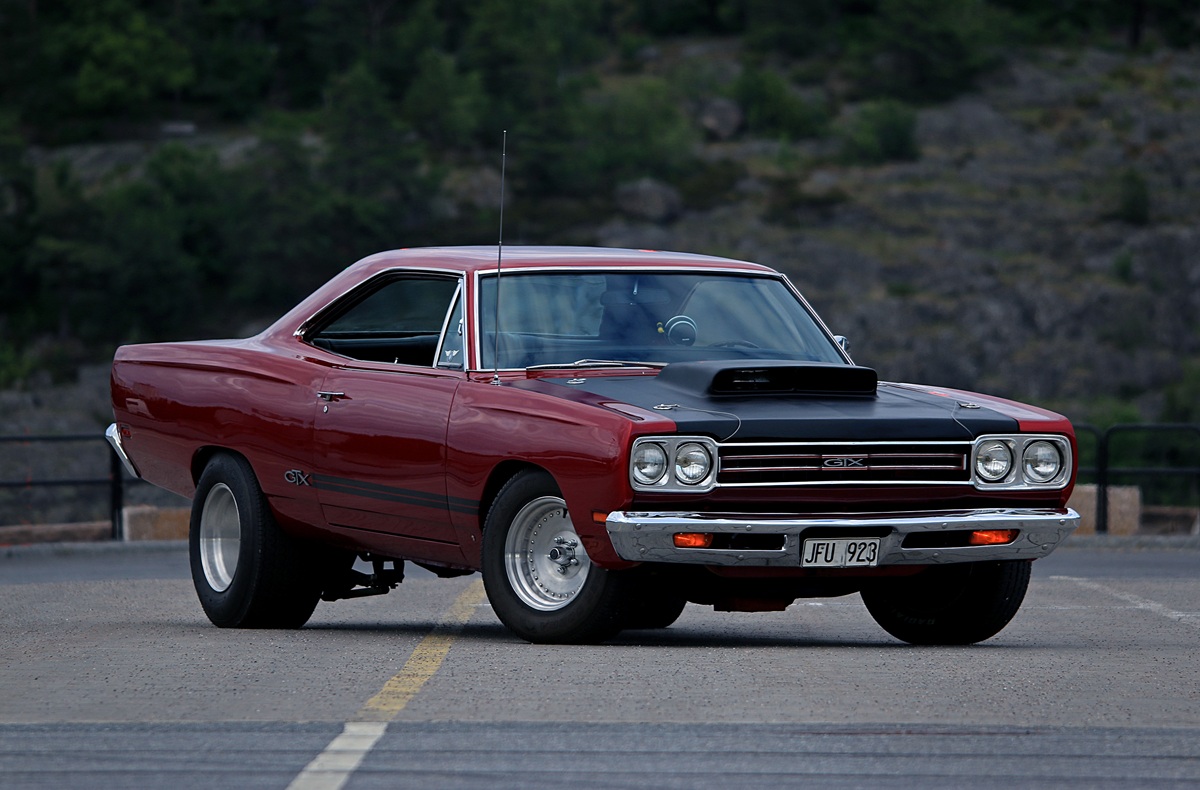
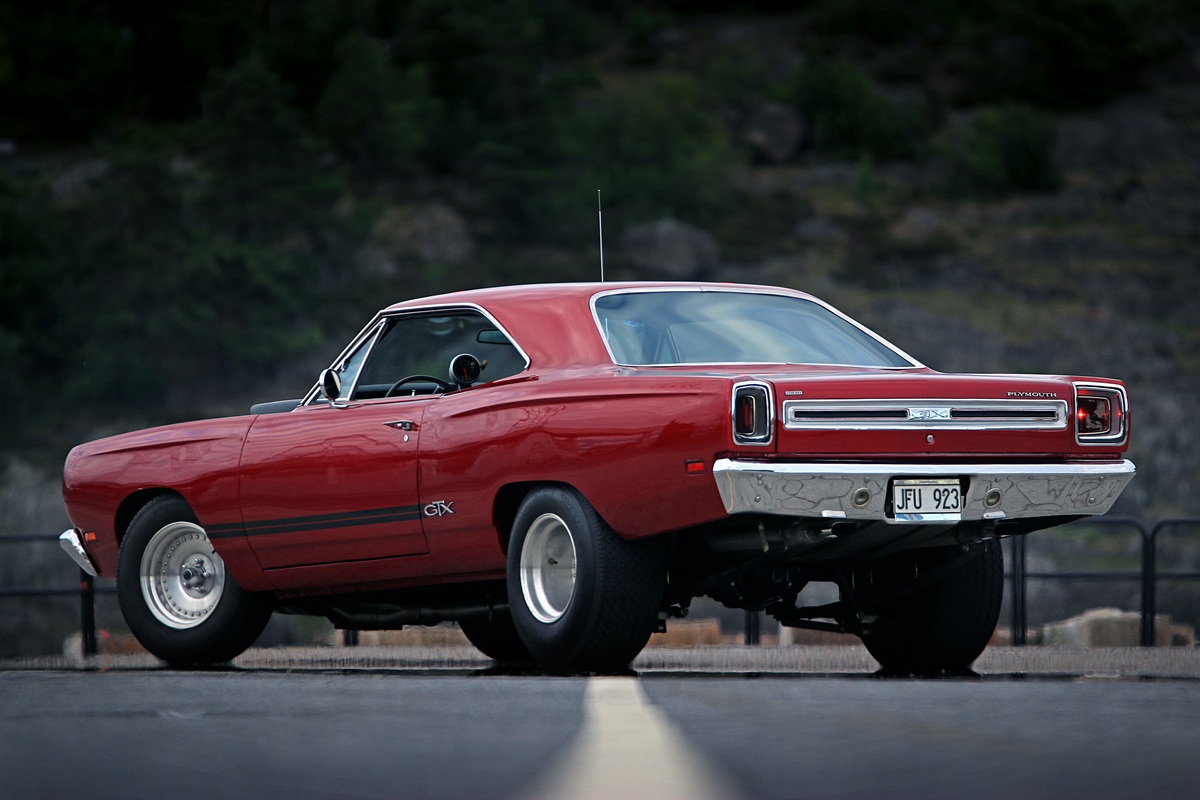
“As it’s been told to me, the car saw quite a bit of racing in the 1990s, and it was during that time it caught fire. The car was sold, and the new owner restored the GTX. It was probably a fairly extensive rebuild, and quite a bit of sheet metal was replaced, including the roof. The car didn’t completely burn up though – mainly the engine bay caught fire. So everything back to the firewall was replaced. And of course, practically every part was swapped out,” Nyström says.
What doesn’t kill you makes you stronger?
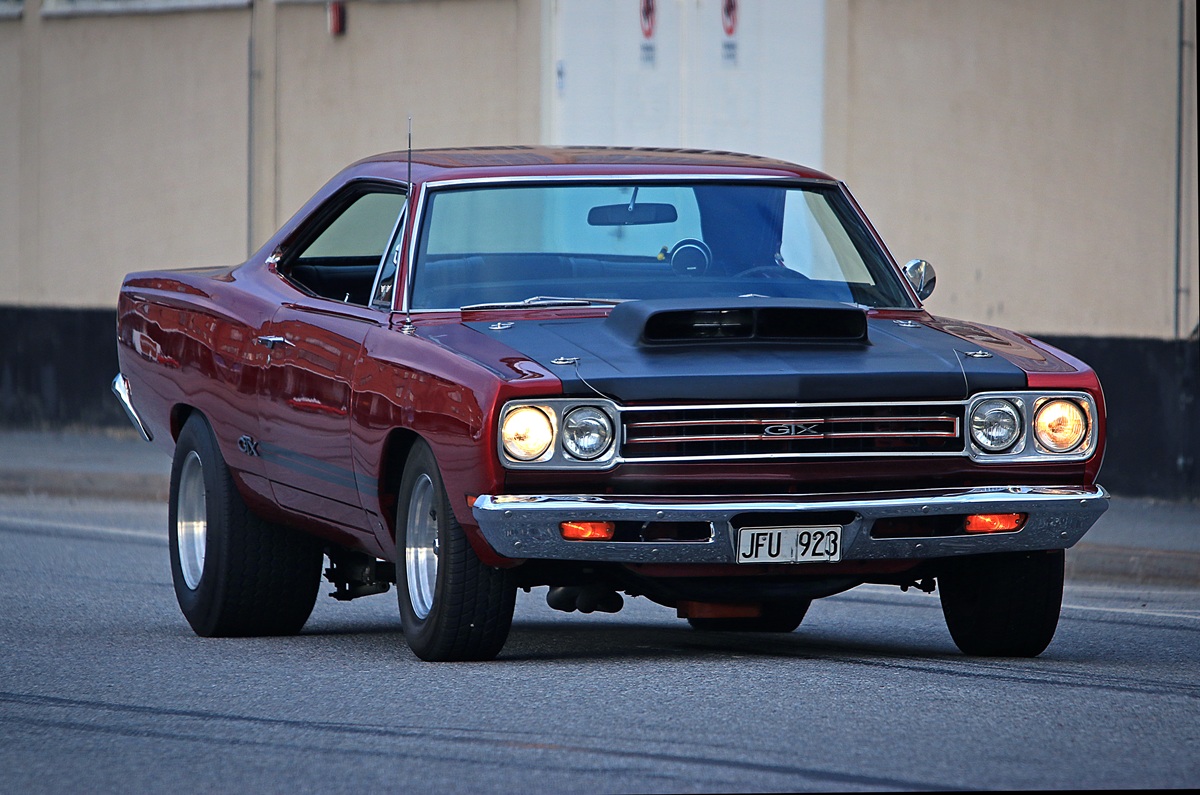
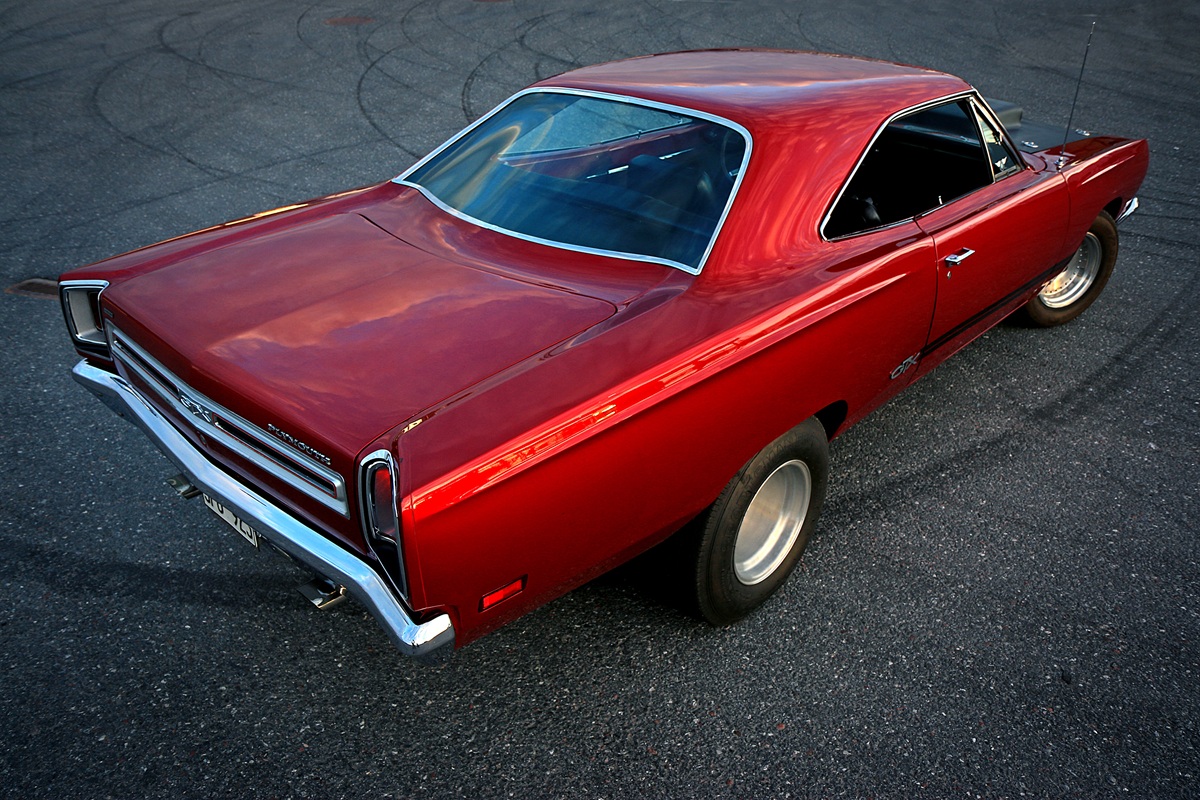
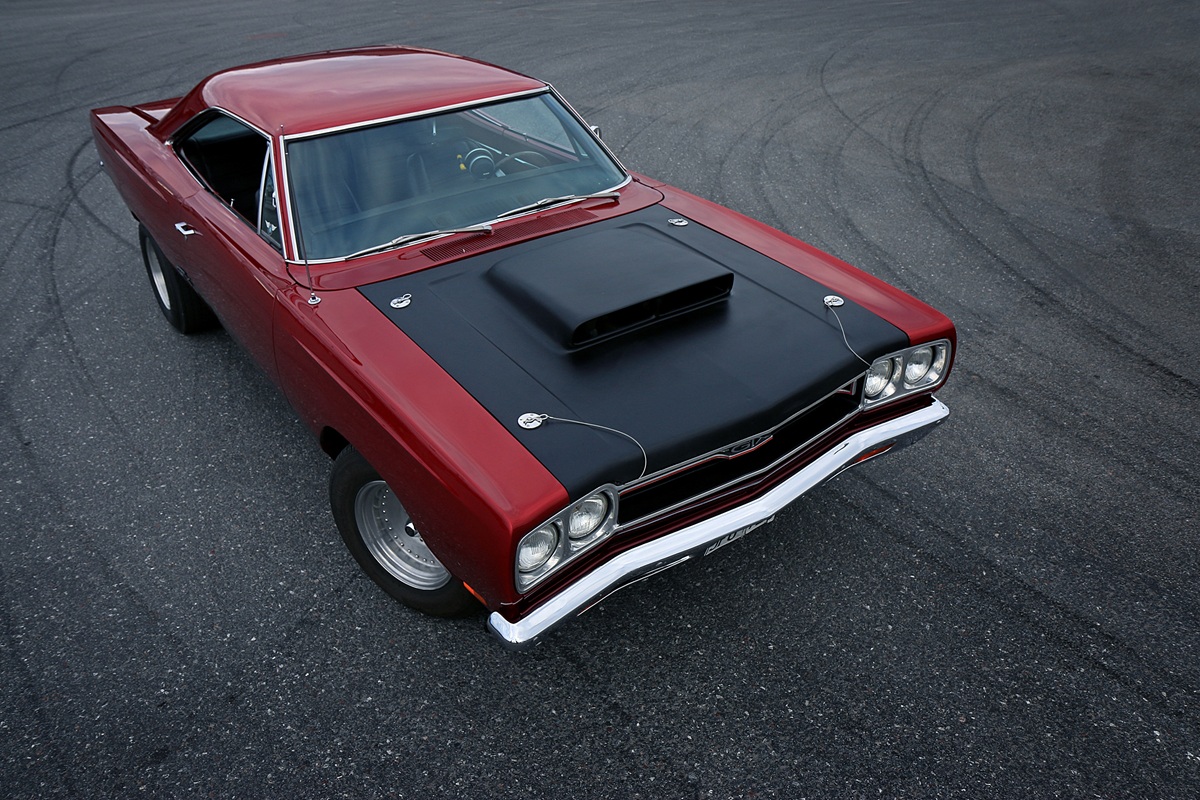
Maybe. What’s certain is that the GTX also got upgraded with some tougher gear during the rebuild. A HEMI® engine, in its first iteration, was installed in the engine bay. A so-called HEMI box – an A833 with an 18-spline output shaft – was fitted. That is, a four-speed manual transmission. A Dana 60 with Mark Williams components was added as well.
“The axles have 40 splines, there’s a spool in it, and the gear ratio is 4.10:1. The driveshaft is four or five inches – I can’t remember exactly – and it has 1350 U-joints underneath. Yeah, everything is overbuilt and generously spec’d.”
For those who appreciate old-school style, it’s worth noting that the HEMI engine in the GTX is the older, “real” kind.
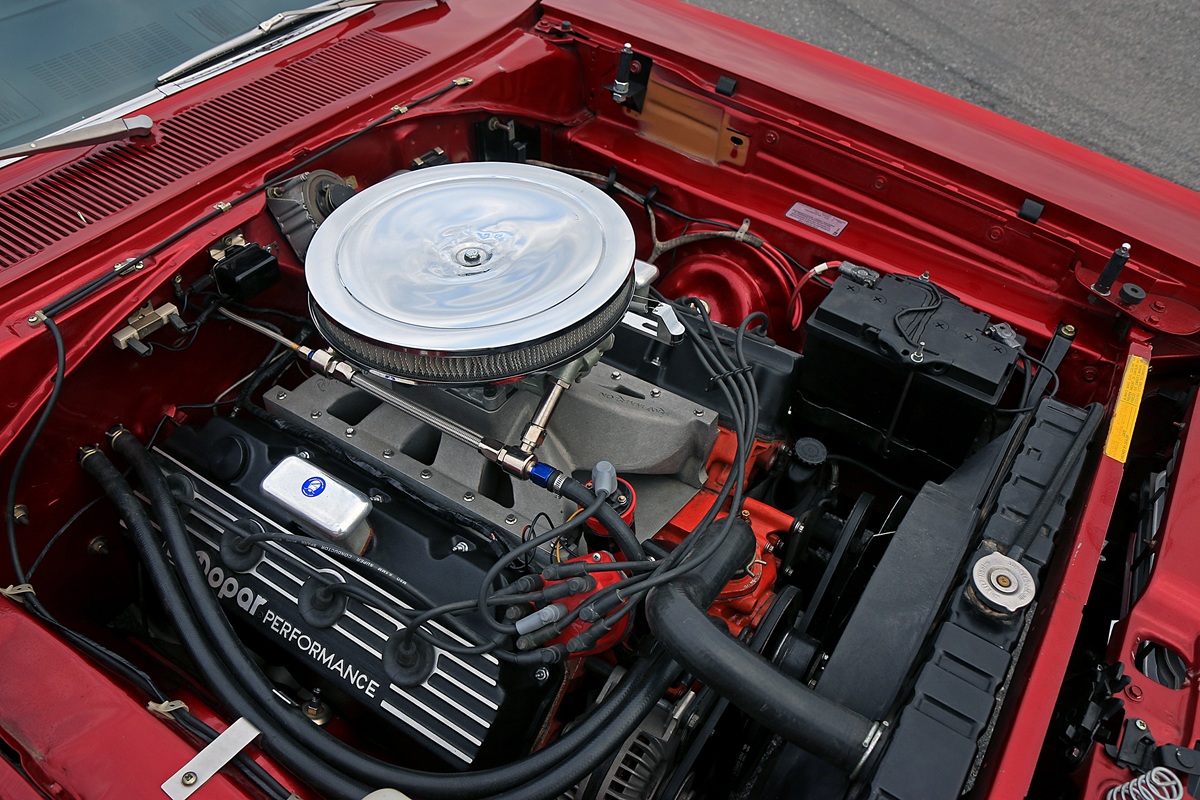
“Yes, it’s a 1968-cast HEMI block, one of just 2,000 produced that year. With the stroker crankshaft from Callies, the engine ends up at 500 cubic inches. Built as a classic pro street HEMI, in other words.”
Nyström has filled the HEMI engine with nothing but goodies. A 1050 cfm Holley carburetor, custom Ross pistons with a 12.7:1 static compression ratio made specifically for this application, and Brodix cylinder heads. The hydraulic roller cam is “service-friendly,” Nyström says with a grin.
He’s also added aluminum connecting rods from Bill Miller Engineering. The material choice is no coincidence.
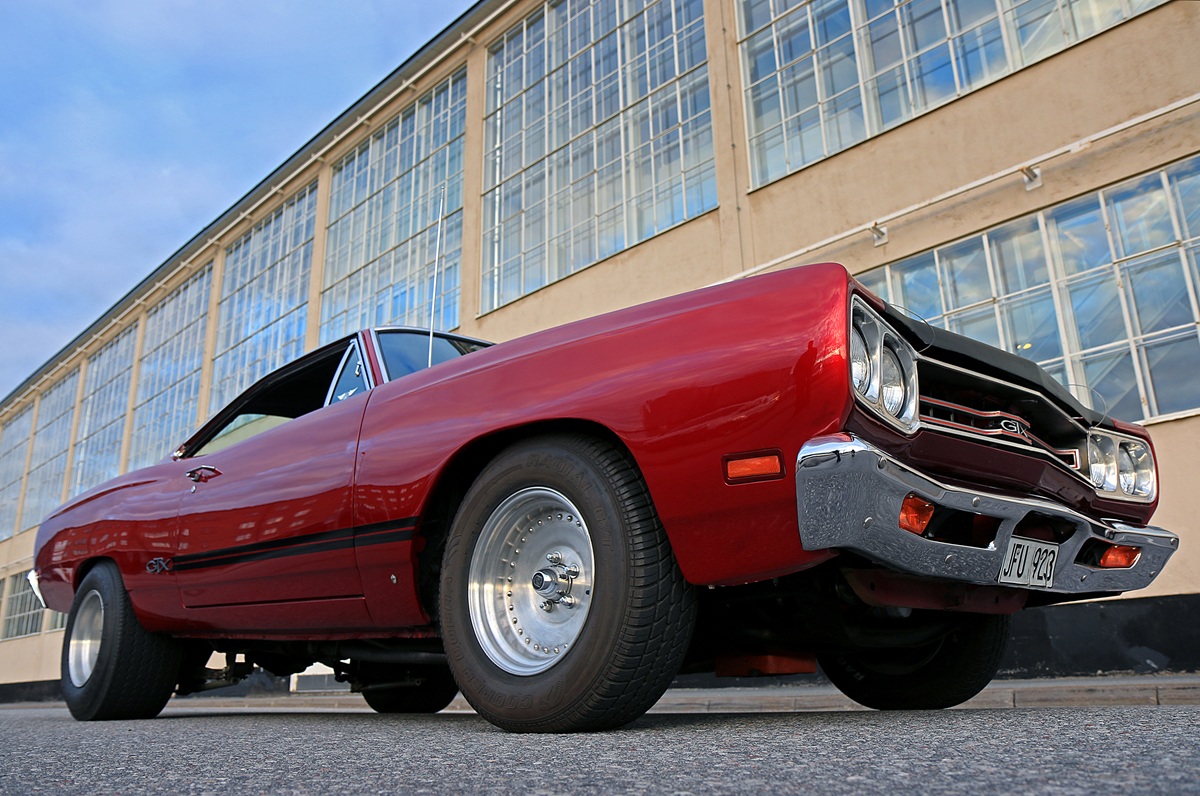
“If a failure occurs – for instance, if a steel rod breaks – steel is harder than the cast iron the block is made of. So a broken rod often destroys the block. Aluminum is softer than cast iron and usually causes less severe damage. That’s the main reason. Today’s aluminum rods are reliable enough to use even in regular street cars. You can drive 100,000 kilometers (around 62,137 miles) with them before needing a replacement. Or 5,000 kilometers per summer for ten years. In a pure racecar with nitrous and wide-open throttle pulls, though, expect to change them after 60-70 runs,” Nyström says.
Now, the magic number – horsepower. What’s the output?
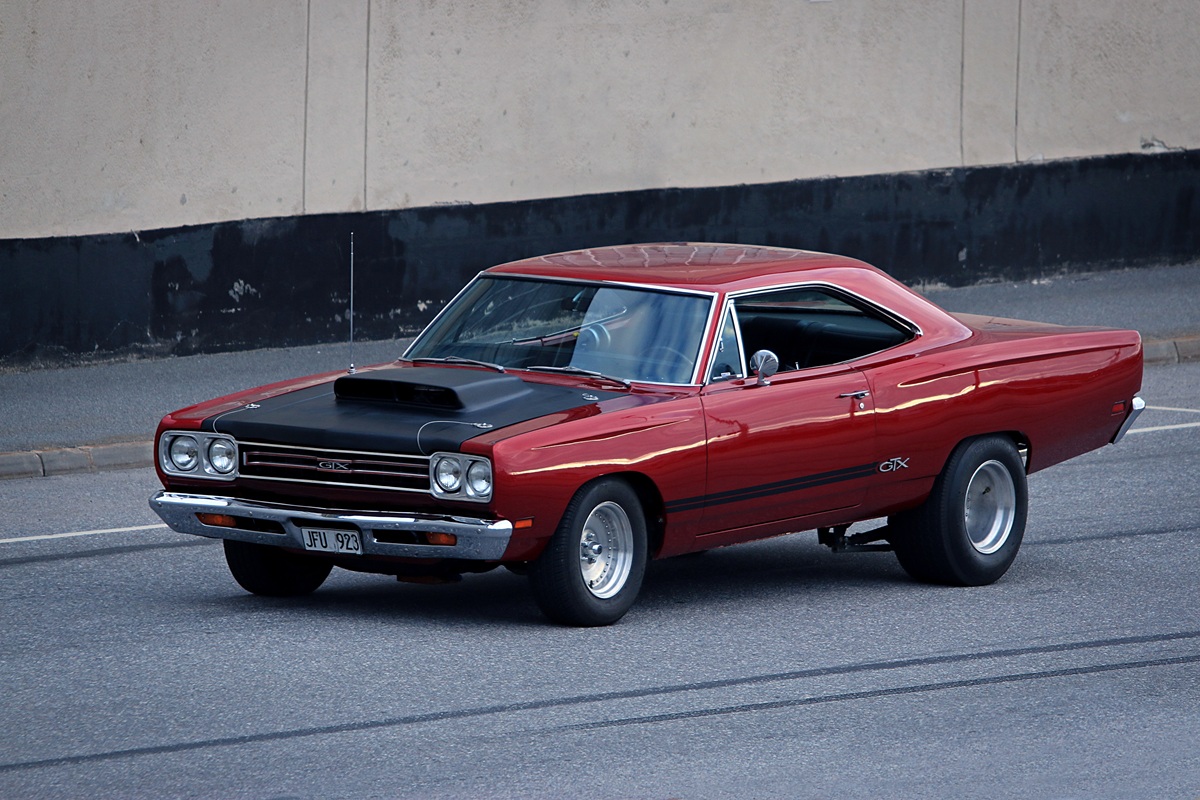
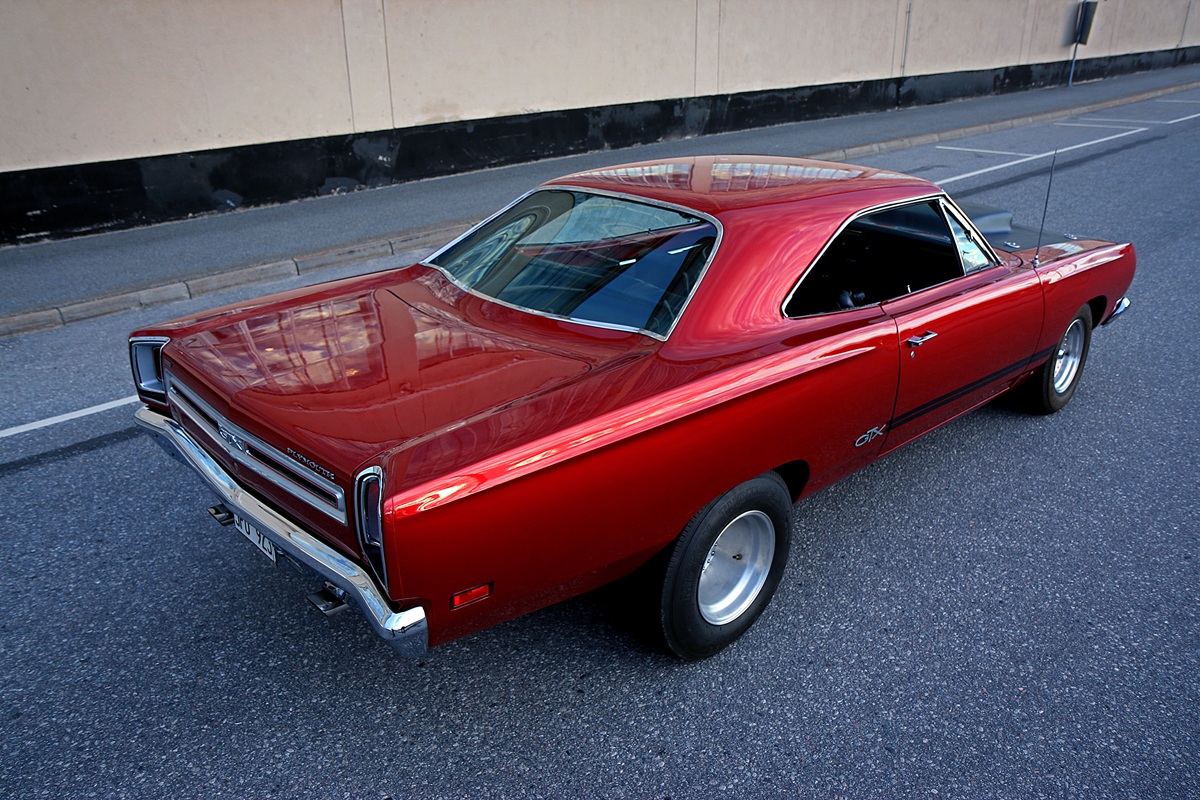
“On the dyno, the V8 produced 720 horsepower at 6,200 rpm. Torque peaked at 950 Nm. There’s more to be had, like with a larger carburetor. But I think I’m doing just fine as it is. It’s plenty. I run regular pump gas, 98 octane.”
If Nyström wants to poke fun at the Chevy and Ford crowd, he can always swap out the current Ray Barton intake – a choice made by Jari Konola – for the Rat Roaster intake he has lying around. The one used on the 426 HEMI engine back in the day to make it legal for NASCAR.
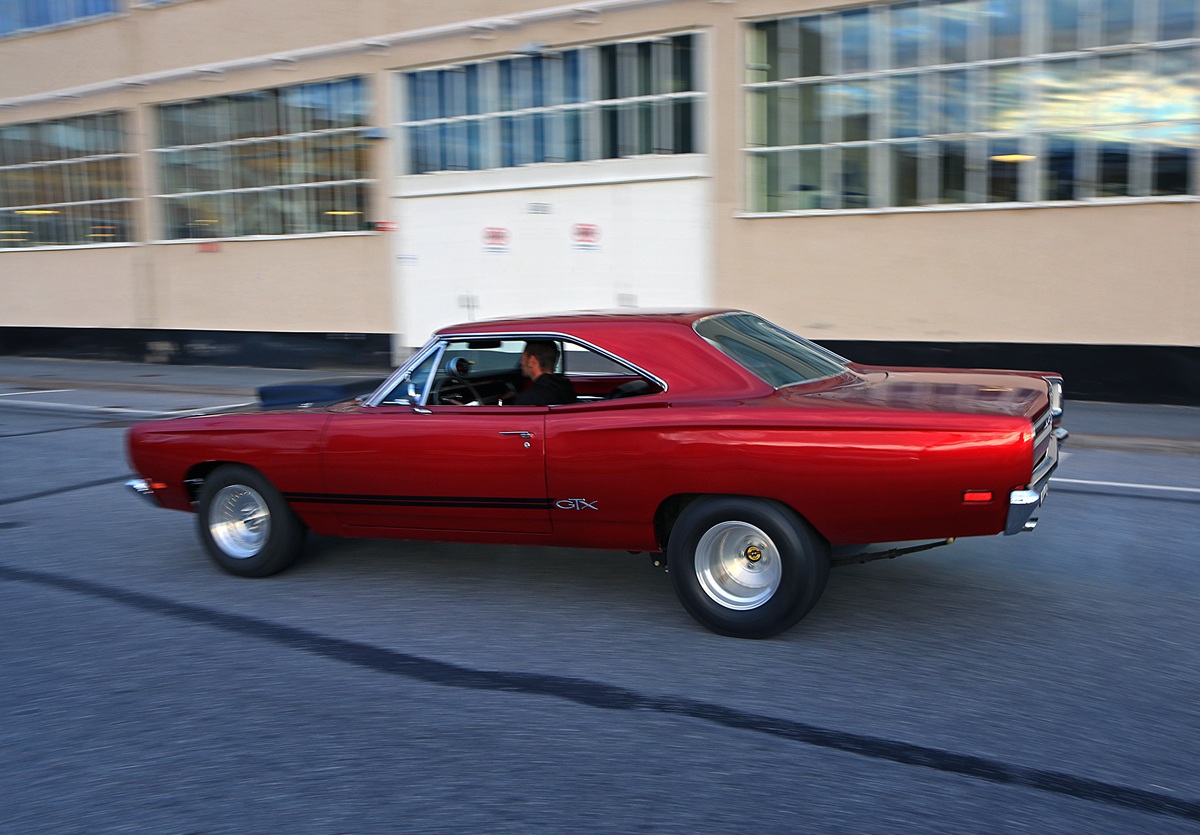
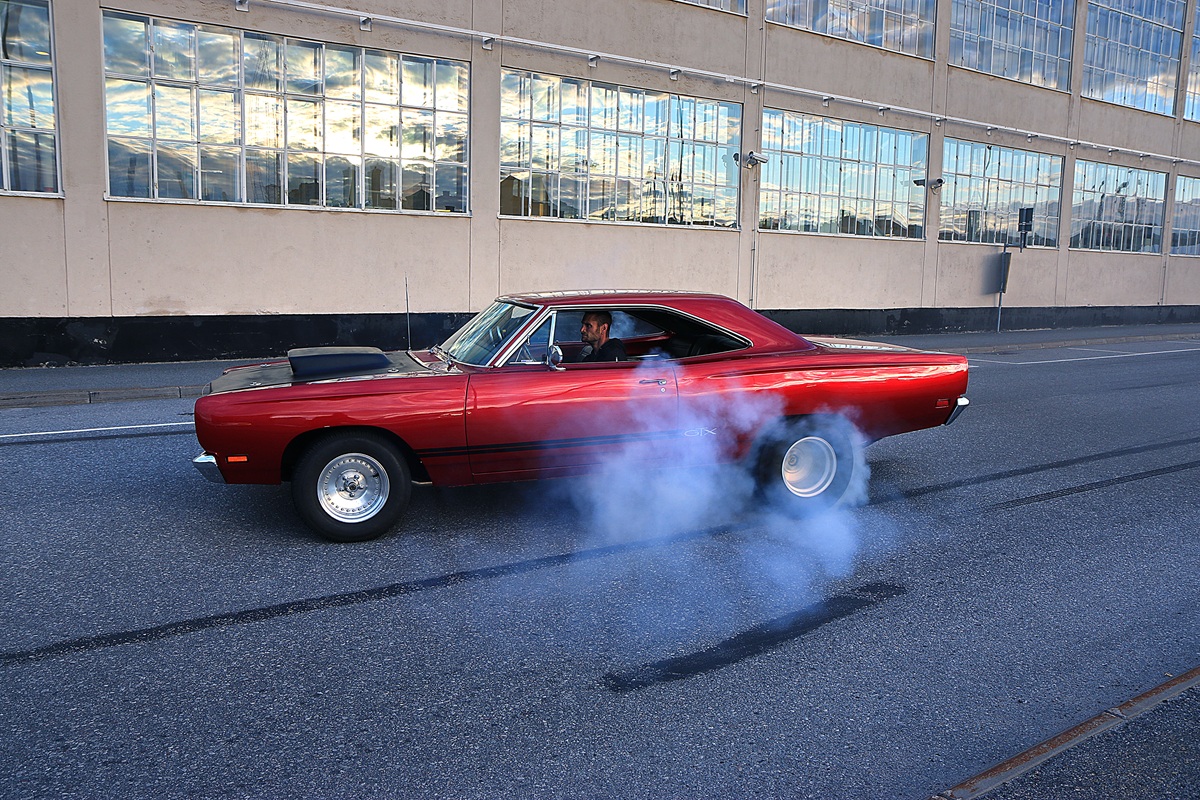
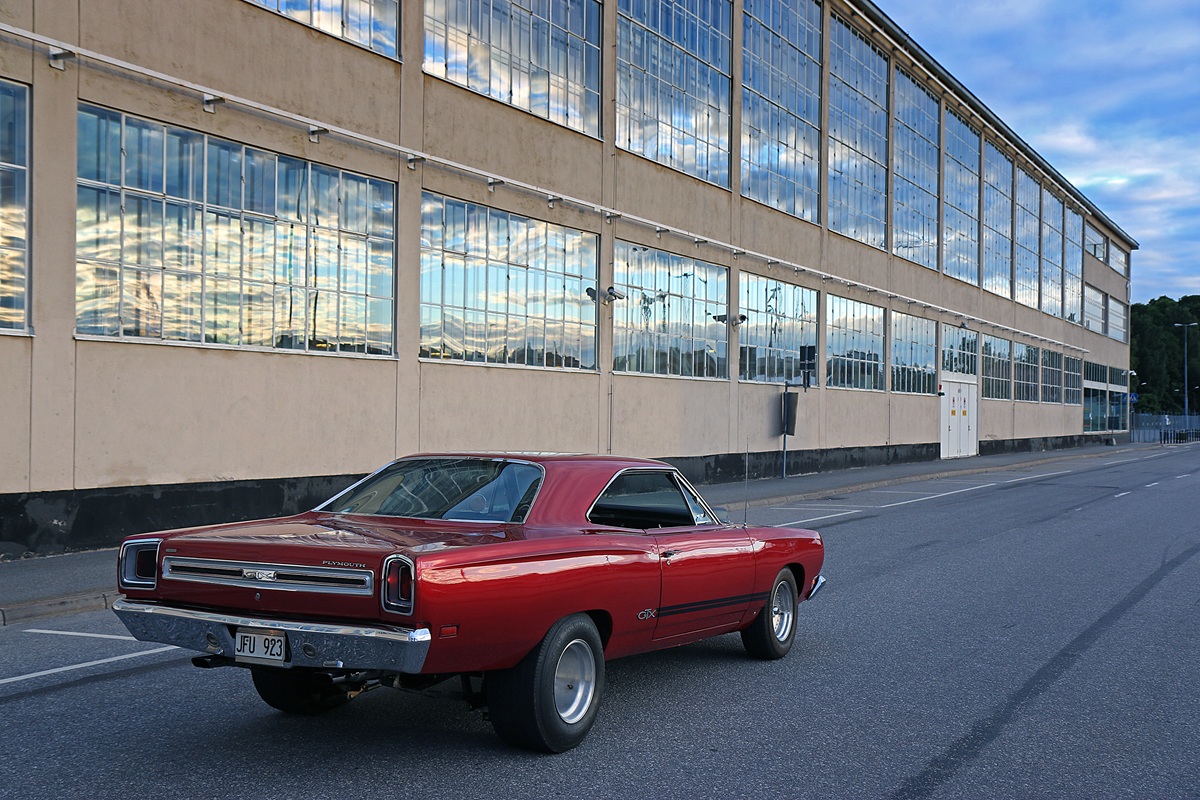
“It does make a bit less power, but at the same time, you can run dual carbs. Looks great, and was often used on HEMIs in drag racing,” Nyström says with a smile.
So, all that power under the hood must mean the GTX has serious disc brakes all around, right?
Wrong.

“It has drum brakes all around. That wasn’t unusual for HEMI cars, actually. Mainly because there wasn’t room for a brake booster in the engine bay due to the HEMI’s size. And drum brakes don’t have pads that are constantly in contact like discs do. So these cars roll incredibly easily. That said, HEMI Darts sometimes had brake boosters. They were mounted on hinges so they could be folded away. If you ever come across a real HEMI Dart, check it out,” Nyström says.
Nyström was one of the competitors during Gasoline Street Week 2017 – the first year that America’s Drag Week made it to Sweden. How did it go? Pretty well, with one minor mishap.

“I tore off one of the leaf spring mounts- the left one. That’s when I realized I’d have to reinforce the rear suspension somehow. Maybe build a ladder bar. There’s quite a lot of torque to handle, and the GTX is a heavy car with a manual transmission. Things probably started breaking already in Hudiksvall, even though everything came loose the day after, at the OKQ8 gas station in Orsa, following the runs at Tallhed Raceway. If there had been better traction at Tallhed, it probably would’ve happened on the strip,” Nyström says, with a touch of seriousness in his voice.
Luckily, some local Orsa hot-rodders were hanging out at the station. Nyström borrowed their workshop and welder to patch up the GTX.
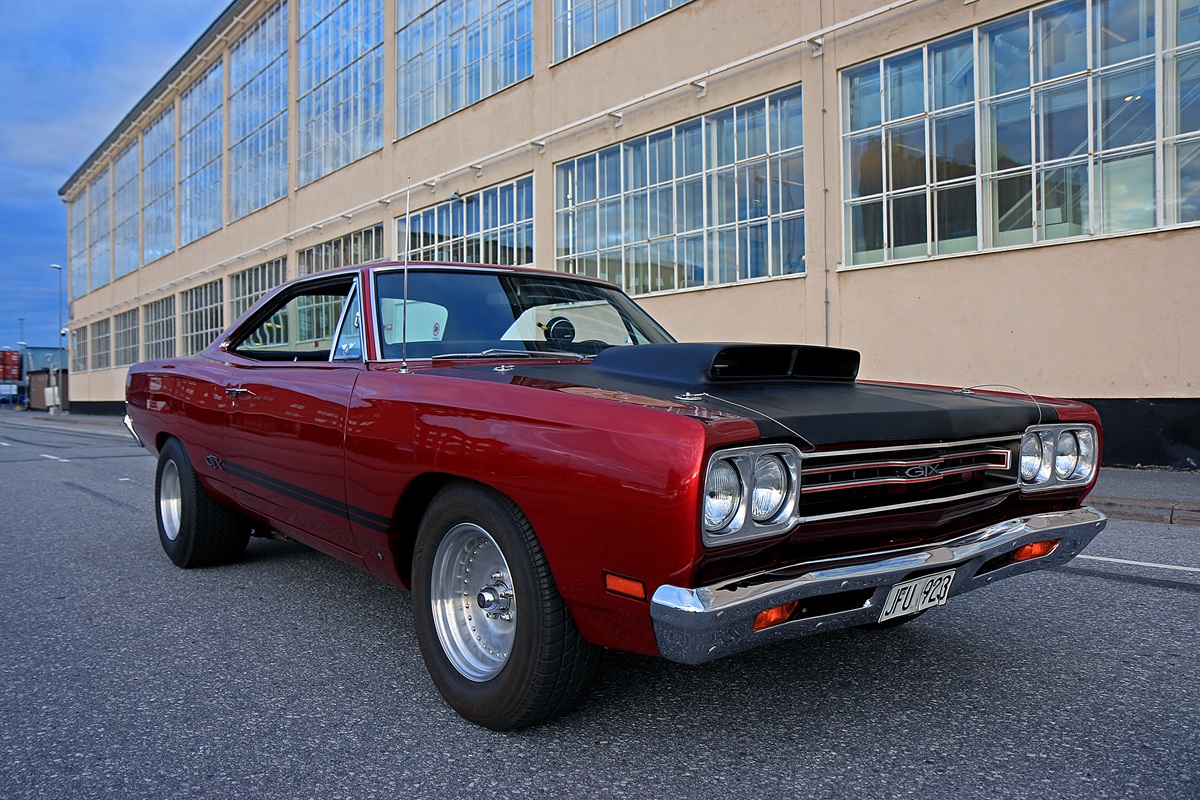
“I always keep some ratchet straps in the trunk. So I pulled the rear axle back with quite a few of those and limped the 500 meters to their garage,” Nyström says, now laughing.
If he decides to run Street Week again, he plans to beef up the rear end. Maybe even try an automatic – if only for a while.
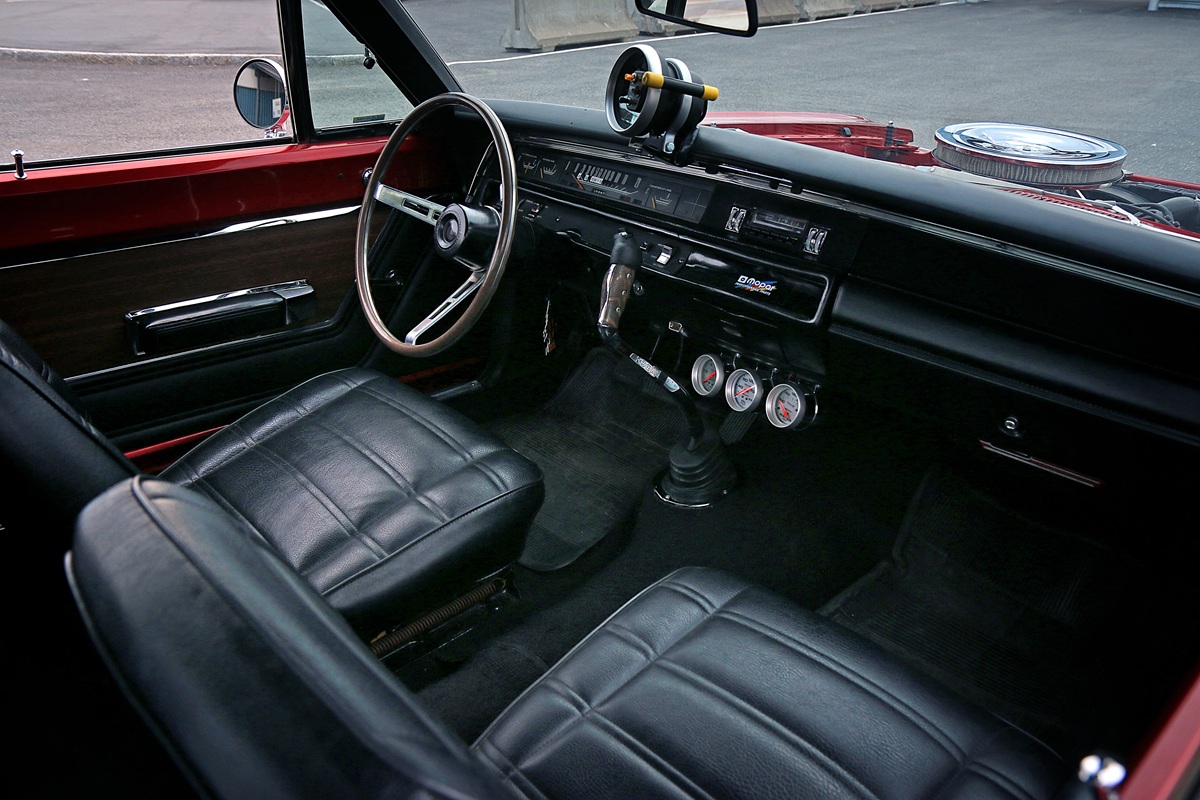
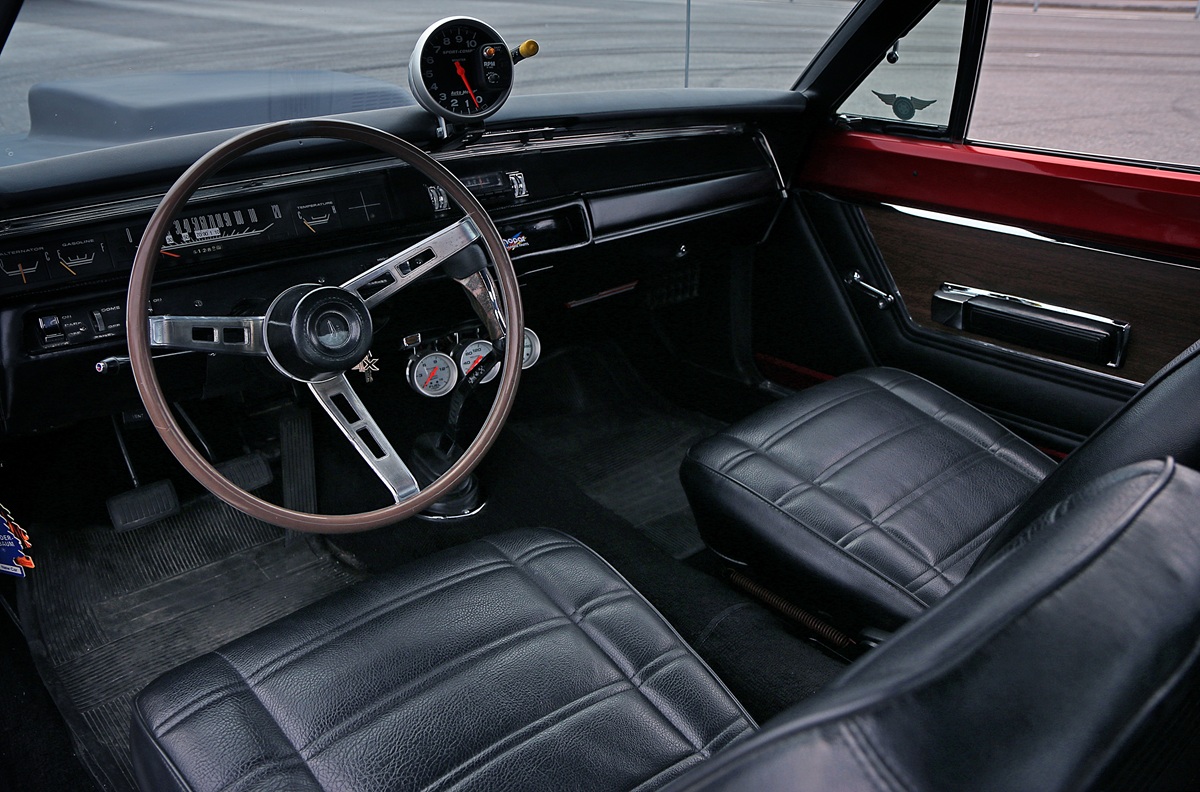
“My best run was eight seconds. I never really nailed a perfect pass with the shifts. Either I didn’t get second gear quite right, or there was some issue with third. And I’ve got a built automatic lying around…”
I start thinking about something that came up in an earlier interview I did with Nyström about another Mopar® vehicle. I’m thinking of the cancer that once struck him.
“It was in 2007 that I was diagnosed with cancer in the soft tissue of the stomach. It was a tough verdict. The doctors said there was nothing they could do. I was admitted to a palliative care unit that fall. I got worse, but not terribly so. Or rather, I didn’t die.”
The doctors were more than a little surprised, and after a while Nyström was sent home – despite there still being no treatment options.
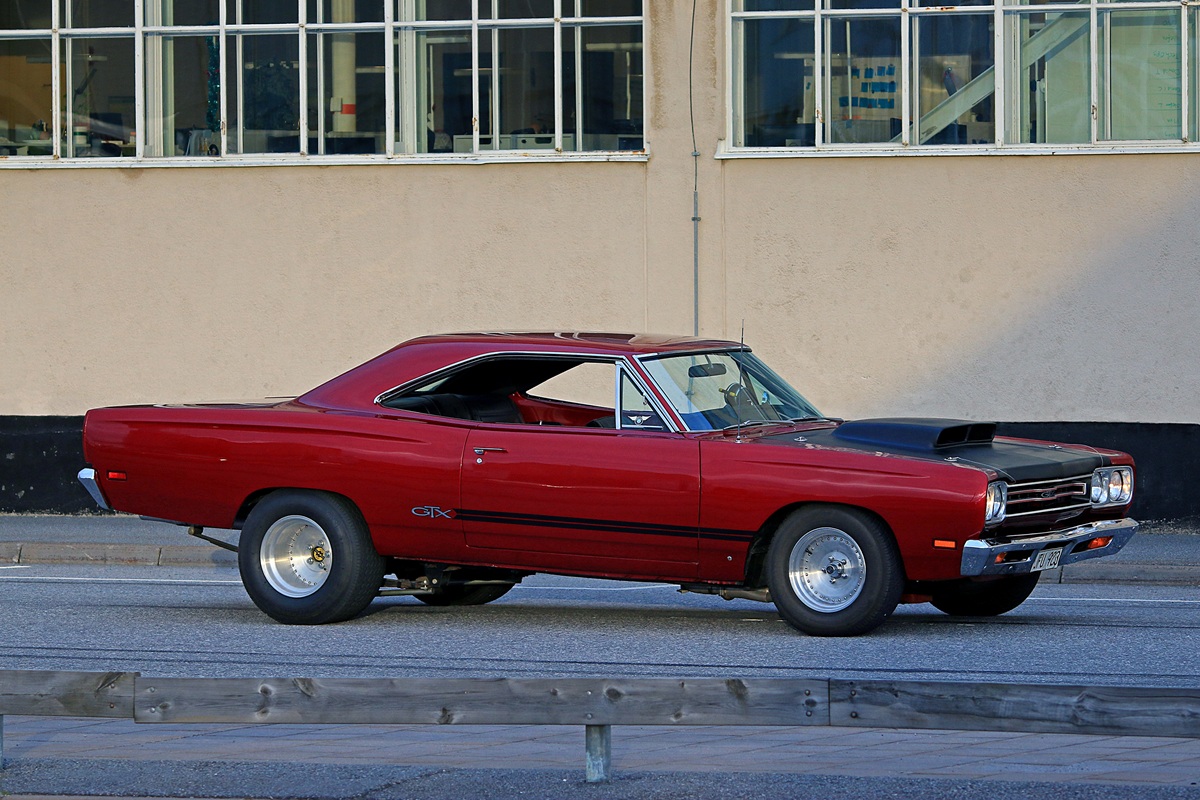
But Nyström thought hard about it. Was there really nothing to be done? He got a chance to undergo maximum radiation treatment of the tumor, just as a brand-new chemotherapy drug hit the market.
“I was among the first in Sweden to try it. It took about six months, and then the tumor had shrunk and died. After 1.5 years and a total of 15 different surgeries, the doctors were able to remove the remnants of the tumor.”
There were various complications, but Nyström thankfully survived them as well.
Nyström coped with the cancer by diving deeper into his car hobby – whenever he could.
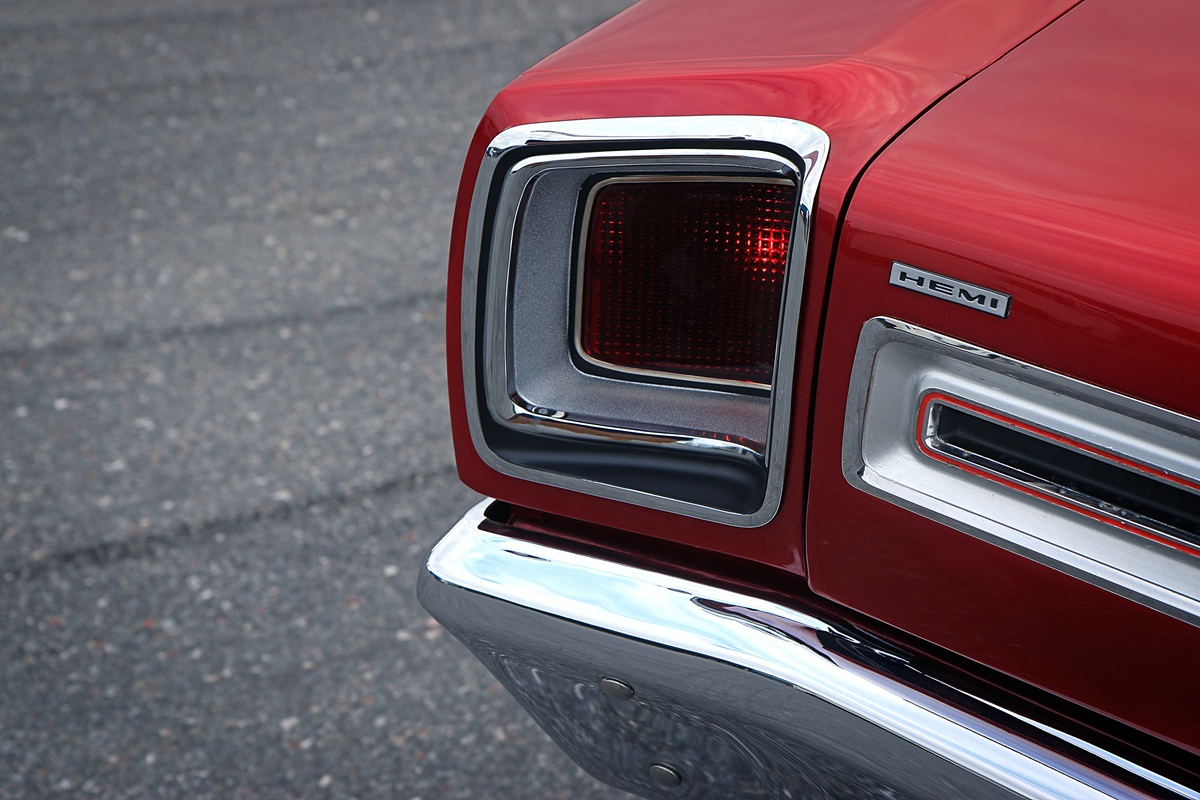
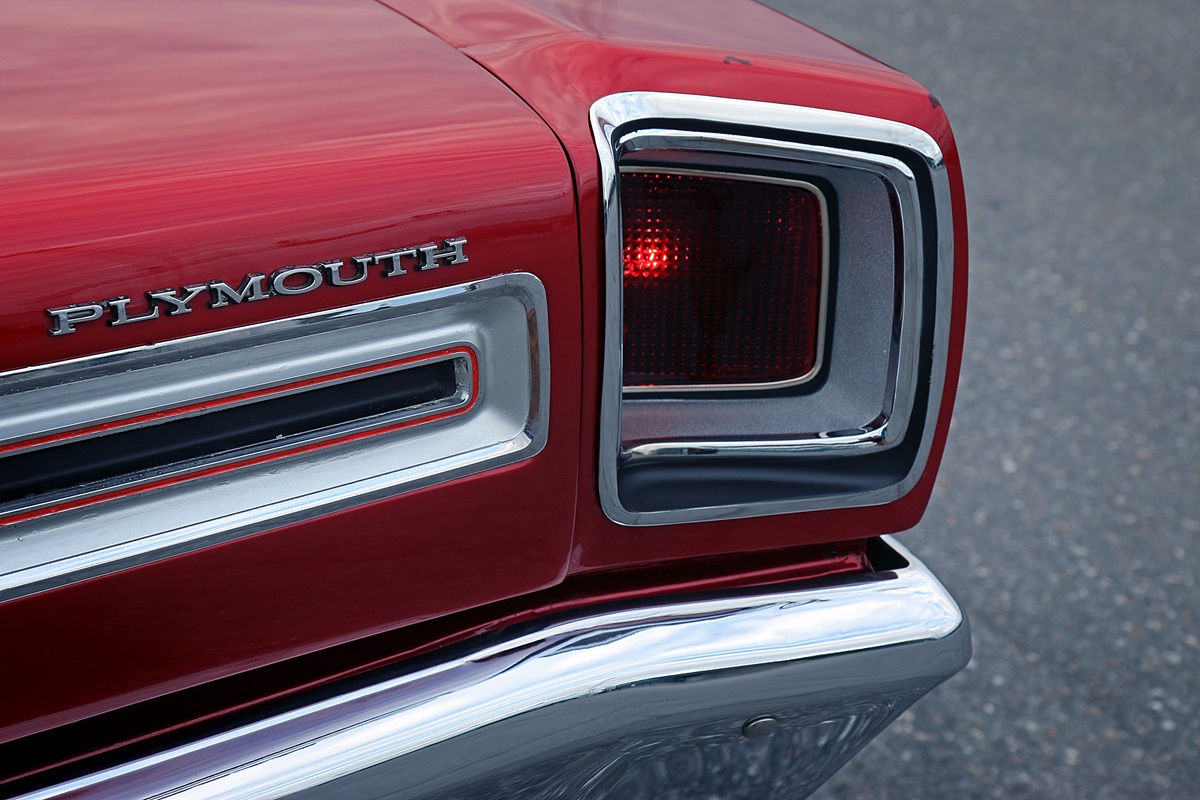
“The cars were my therapy. I refused to accept that I was sick. I didn’t care if it was night or day. I’d go to the garage and wrench whenever I had the energy,” Nyström says.
And life after beating cancer? Nyström believes anyone who feels the urge to do something should do it – right away. Don’t overthink it. Better to go for what you want and deal with any challenges if and when they arise, than to imagine problems that might never happen.
The message is simple: “Try it now. Go for it.”
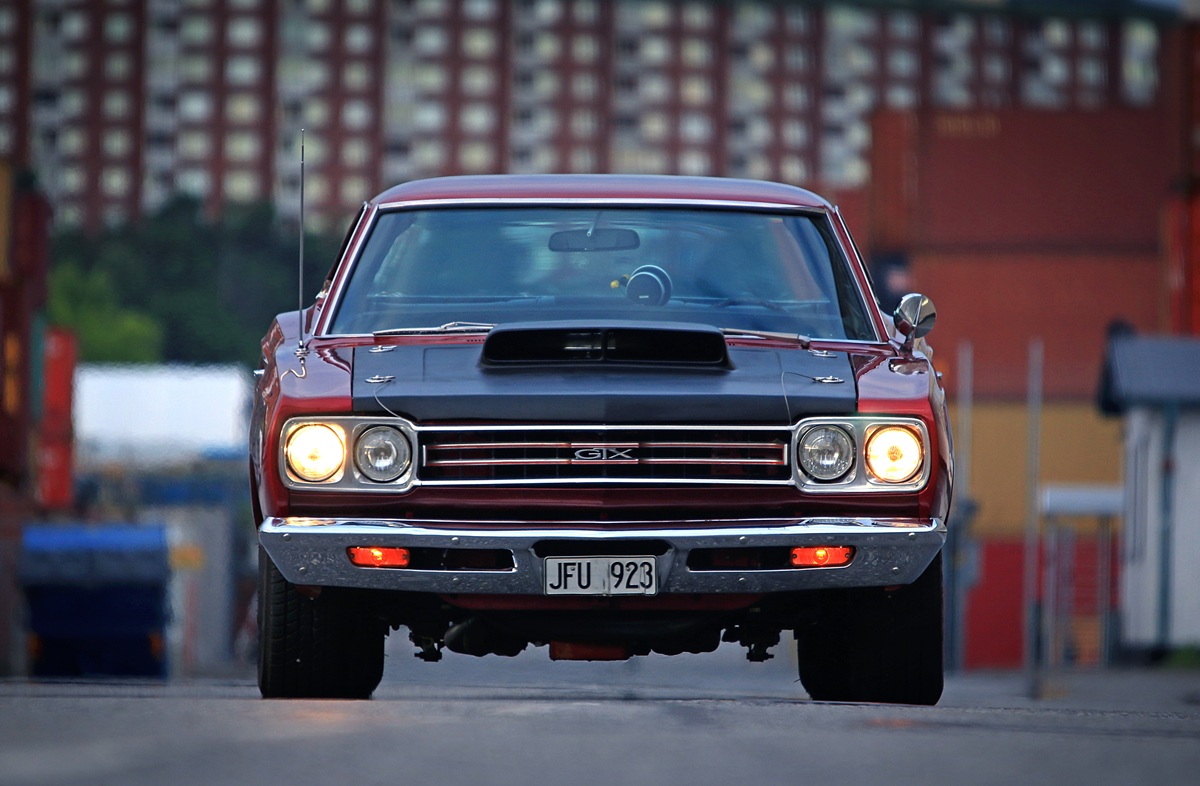
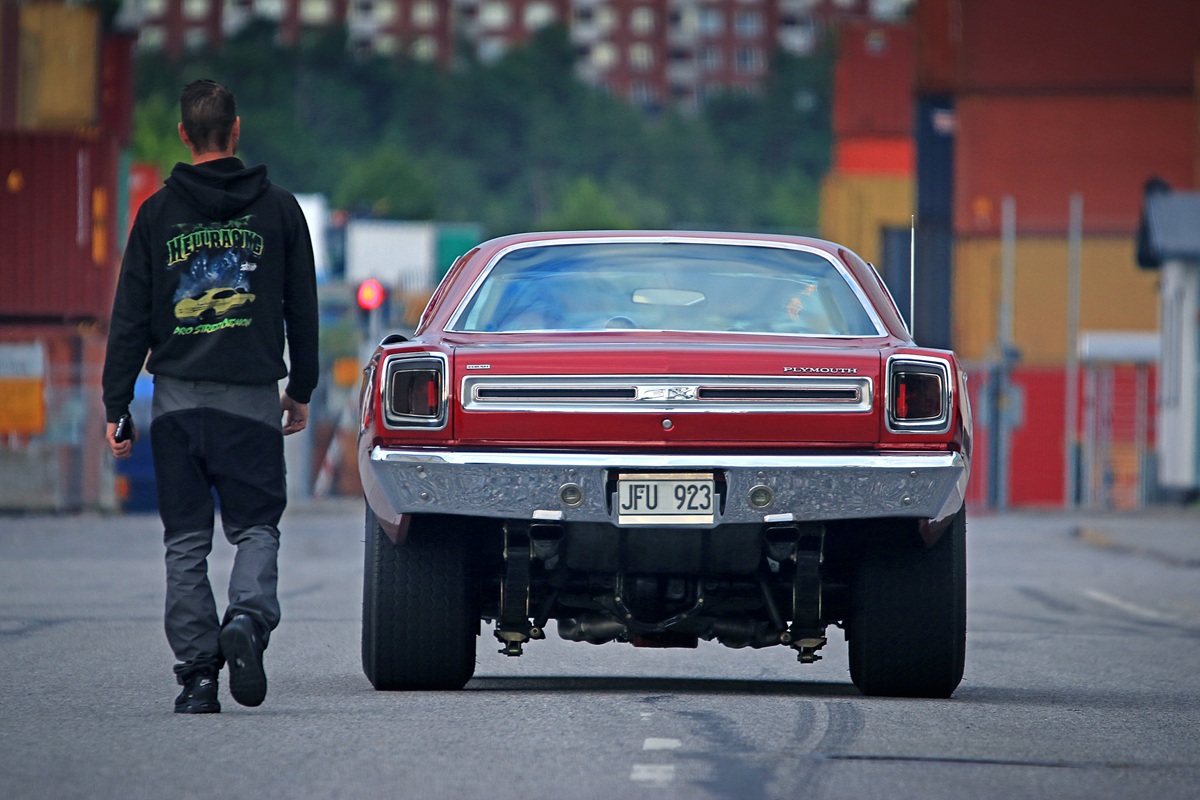
Speaking of trying things – I get the chance. Yes, to test drive a HEMI engine-powered vehicle with a four-speed manual and glorious ’70s attitude. What’s it like to drive? Absolutely wonderful.
Now and then, I get the chance to test drive feature cars, but I can count on one hand the times I’ve said yes. There are plenty of reasons. One of the main ones is that I don’t want to damage someone else’s jewel.
But driving this machine… what an experience! Just like that first time I turned the key in my buddy’s Camaro, all those years ago. It felt like the entire chassis and body twisted on its axis when the engine fired up. Of course it didn’t – but every sense was alive. Same thing here. I’m on edge. Fumbling with the shifter and clutch like a total rookie.
This isn’t your average daily driver. Getting it into gear takes muscle and finesse. Then you gently ease into the throttle while slowly releasing the clutch.
No crazy driving in Nyström’s GTX, of course, but just dipping into the gas a little and feeling – and hearing – the HEMI engine work is pure magic.
I understand why Nyström loves this car.
Here It Is Now
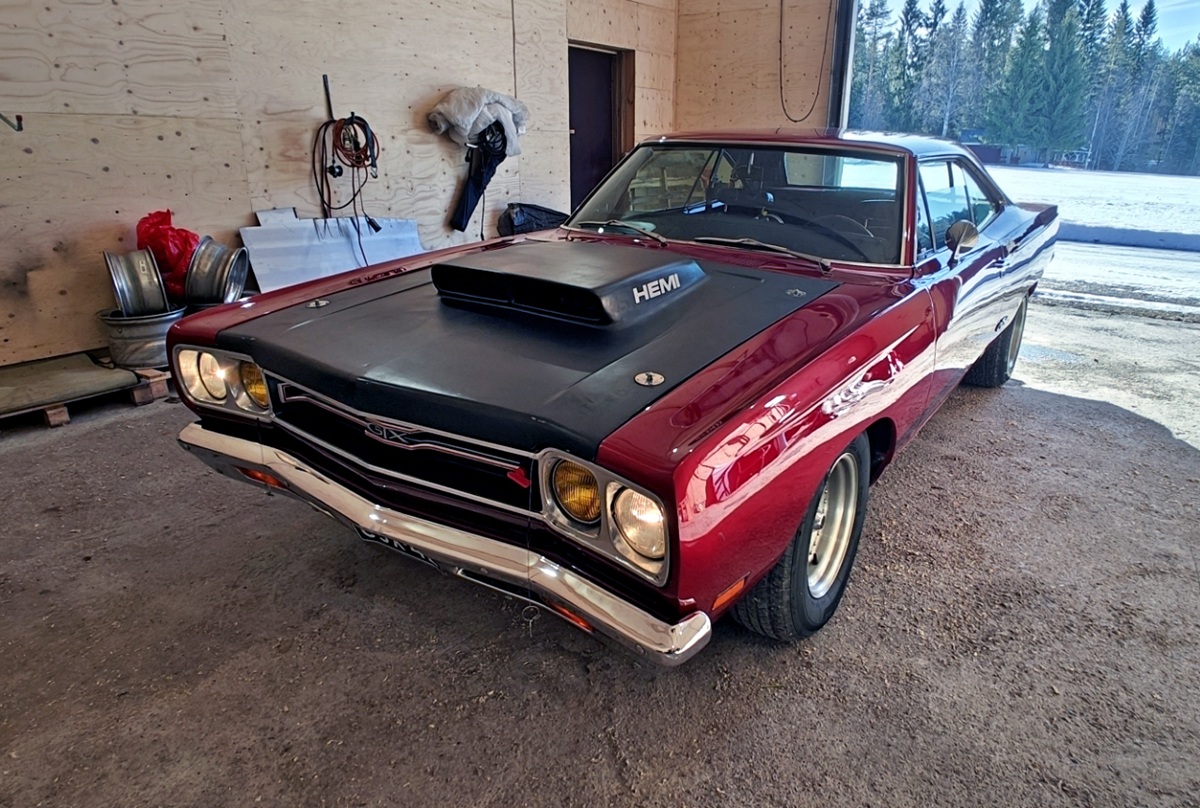
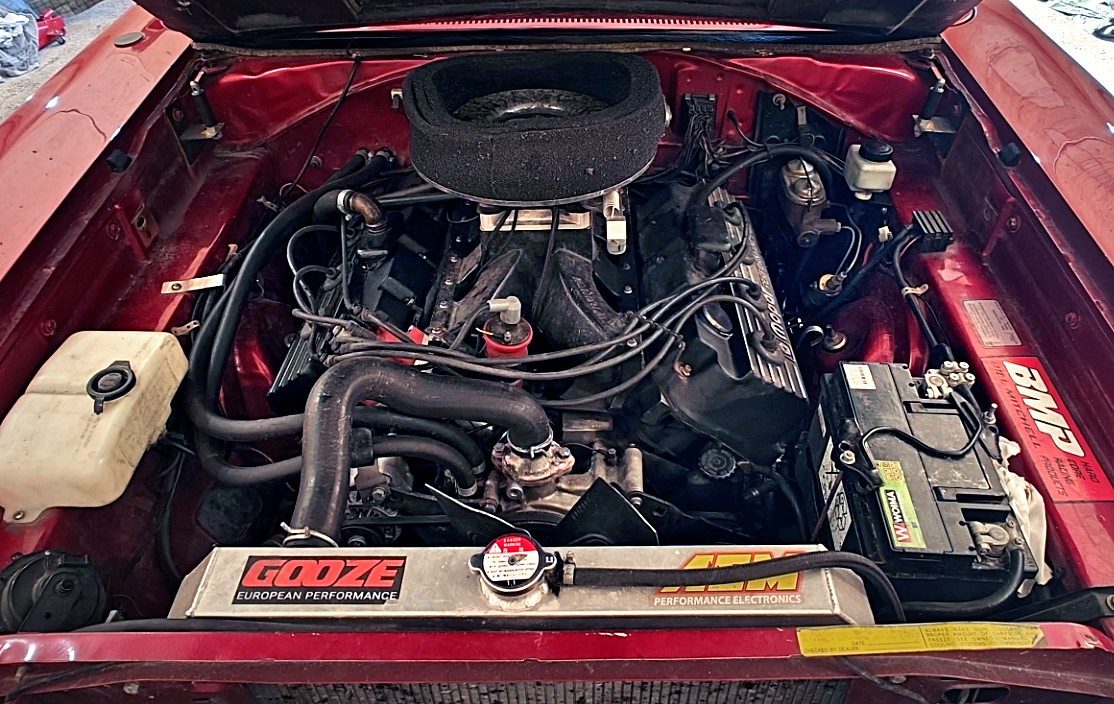
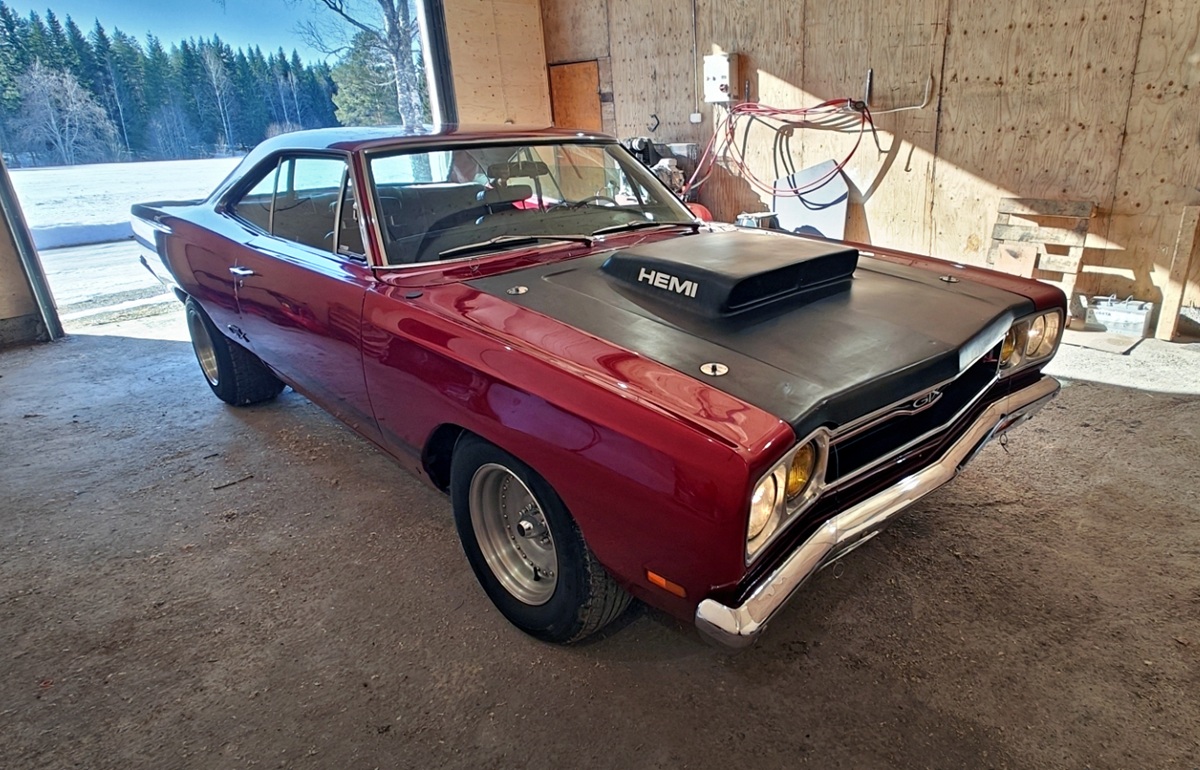
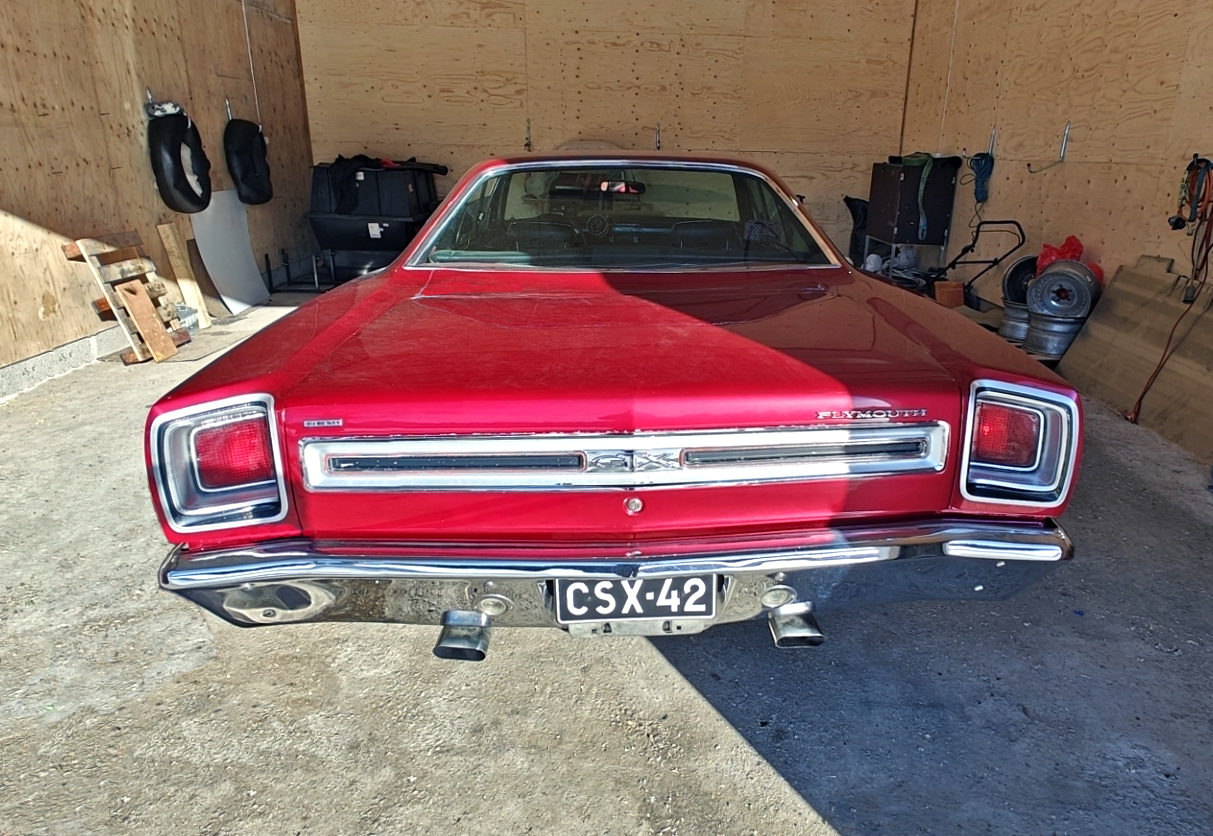
It’s been a few years since that feature was written. Today, the GTX can be found in Sweden’s neighboring country Finland, where it’s owned by Janne Pekkala in Haapajärvi.
The car has received a number of upgrades. There’s a new HEMI V8 under the hood – an aluminum block (Bill Mitchell) with 540 cubic inches of displacement.
The carburetor is now replaced by fuel injection, specifically a Fitech Mean Street EFI system.
The four manual gears have become five, thanks to a strengthened Tremec gearbox built to handle about 900 horsepower.
As for the rear axle: the spool is out, and a Yukon locker is now in.

0 Comments